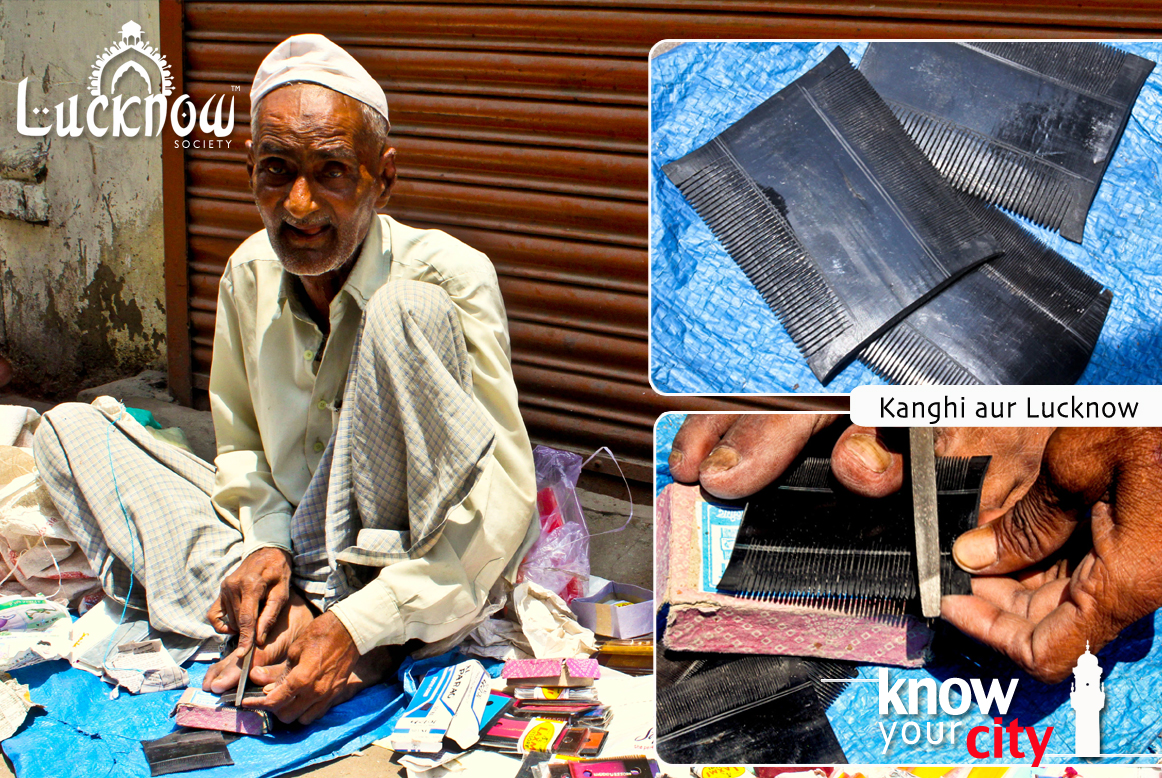Kanghi aur Lucknow
It is believed that the Lucknow is a major centre for kanghi karigari and artisans from all over the country came over to learn this art. It is always surprising to know art forms that exist in Lucknow. Talent and beauty goes hand in hand in every art form present in the city. Among the many unique professions and practices is the art of making kanghi (comb). The exclusive kanghi wali gali is a perfect example of the same which is in the nakkhas area of the old city, which was once bustling with kanghi karigars is now just known for its name. The karigars are skilled in making kanghis out of horns of animals. The kanghi wali gali was named after the kanghi makers residing in the area. It is believed that there were more than 100 karigars residing in the gali, involved with the profession of making kanghis.
We had the opportunity to speak to 70 years old Mohammed Usman, the very last kanghi karigar of the gali. He has inherited this art from his family and has been practising over 60 years. While talking to him, we learnt about the past and the intricacies of this art form. He puts up a small stall every year in Lucknow Muhautsav, and it is the only time of the year when he earns as much he deserves. He is disheartened to know that there is no one to take this profession forward. The art of making kanghi out of animal horn involves skills and detailed steps. After the horn is bought from the market it is washed and put to dry. It is then continuously beaten into the required shape followed by cutting marks on the comb. It is then sharpened using a filer sort of tool. A lot of physical labour and hardwork goes into making a kanghi and is sold at a very nominal price. Variations in designs, types and details can also be seen depending on the price. After the introduction of cheaper plastic combs, the horn made kanghis went out of market and so did the artisans. Lack of government intervention and recognition, the kanghi makers suffered serious blow in the market and have moved to other professions.
Credit : Intern – Nishita Banerjee

